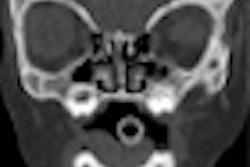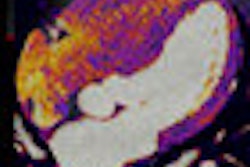Children undergo many imaging procedures involving radiation, concludes a new study from the University of Michigan and other U.S. centers. The three-year study covering more than 350,000 children with health insurance showed that the subjects received, on average, three scans involving radiation over the study period.
"What we've tried to do is raise awareness of the issue and start a national dialogue by identifying the overall scope of the problem," said lead investigator Adam Dorfman, MD, from the University of Michigan in a statement accompanying the study (Archives of Pediatrics and Adolescent Medicine, January 3, 2011).
In the retrospective study, Dorfman and colleagues identified 355,088 children younger than 18 years of age in five large U.S. healthcare markets to track how often these imaging procedures are used. All subjects were continuously enrolled in UnitedHealthcare between January 2005 and December 2007. The researchers analyzed outpatient and inpatient claims for imaging use over the three-year study period.
The team's goals were to determine overall population-based rates of imaging procedures in children, explore the use of these studies across age and gender groups, and identify the most frequently used procedures, the authors wrote.
The mean subject age was 9 years (± 4.9 years). The largest proportion (34.9%) of subjects was from the Dallas area and the smallest proportion (12.8%) was from the Orlando, FL, region.
The researchers found that a total of 436,711 imaging procedures were performed in three years in 150,930 (42.5%) of the children who received at least one of these procedures. More than one-fourth of the children (n = 89,618, 25.2%) underwent two or more procedures using ionizing radiation, while 56,754 (16.0%) underwent three or more.
The study design did not allow for the calculation of actual radiation doses in the exams or the indications for the study, the authors noted. "Instead, we focused on describing the patterns of utilization across various types of imaging procedures, which we believe adds critical new information for policymakers and providers," they wrote.
The highest rates of imaging use were generally in children 10 years and older, and use of imaging was generally higher among boys (80,638 [44.4%]) versus girls (70,292 [40.6%], p < 0.001).
Based on the data, the average participant in the study would be expected to receive approximately seven imaging procedures utilizing radiation by age 18, the authors wrote. In all, 141,480 (39.8%) children received at least one x-ray, with 22.3% receiving more than one x-ray exam.
Chest radiography was the most common procedure performed overall, at 68.2 procedures per 1,000 children annually. This was followed by plain radiography of the extremities, spine, and the abdomen.
But CT scans are among the most important from the viewpoint of radiation exposure, the authors wrote. Nearly 8% of the children in the study received a CT scan during the three-year study period, with 3.5% of the children receiving more than one. Approximately 2% of the children underwent at least one fluoroscopic or angiographic procedure, with 0.7% receiving at least one nuclear medicine scan.
By far the highest annual rate of CT scan use involved studies of the head, followed by the abdomen and pelvis. CT scans of the abdomen and pelvis, in particular, increased dramatically with age, rising from 5.1 procedures performed per 1,000 children annually in 0- to 1-year-old patients to 40.9 in 15- to 18-year-old patients.
The National Research Council's Biological Effects of Ionizing Radiation (BEIR) VII report has cautioned that there is no lower threshold of exposure to radiation that has been identified as without risk, and that repeated exposure increases risk in a linear fashion, Dorfman and colleagues noted, adding that studies also suggest that the hazards of radiation may be larger in children than adults.
"In particular, CT scans were used in approximately 7.9% of the study population and their use increased dramatically in older groups," the researchers wrote. "As such, the overall contribution of these imaging procedures to the long-term risks of radiation should not be overlooked. This is particularly true since their use appears to be concentrated in a minority of individuals who may undergo repeat studies."
The use of imaging studies utilizing ionizing radiation is common in children, the study concluded.
"Studies associated with high doses of radiation are not infrequent, and are performed repeatedly in a smaller group of children," according to the authors. "These results highlight the importance of generating databased guidelines to aid clinicians in determining the appropriateness of performing imaging procedures in children."
"Of course, there is immense life-saving value in medical imaging, so our study doesn't suggest at all that these tests shouldn't be used in children," co-author Kimberly Applegate, MD, from Emory University in Atlanta, said in a statement. "We have to be smarter about how we use tests. For example, children don't always need the same radiation dose during a CT scan to get the same quality of image and information."
Each procedure should be guided by the principle of ALARA (as low as reasonably achievable), which advocates minimizing the radiation doses while still obtaining sufficient clinical information, the group wrote.
By Eric Barnes
AuntMinnie.com staff writer
January 4, 2011
Related Reading
Thyroid cancer risk from ped neck CT shouldn't be generalized, December 24, 2010
Head CT frequency, costs drop for kids after rule change, October 6, 2010
Pediatric CT dose is low but varies widely in Belgium, April 23, 2010
320-row CT minimizes dose in pediatric abdominal studies, March 3, 2010
CATCH rules accurately predict which kids need head CT, February 9, 2010
Copyright © 2011 AuntMinnie.com




















